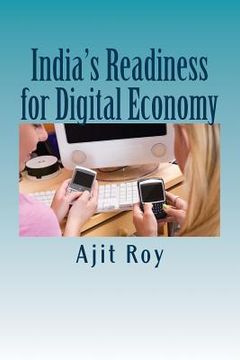Synopsis "India's Readiness for Digital Economy: Cashless Economy"
The digital economy is rapidly developing worldwide as the largest driver of innovation, competition, and growth. Even though many people have been excluded, tremendous opportunities are available for the digital economy to support financial inclusion for sustainable economic development. India could see a boost of $700 billion, an 11.8 per cent increase by 2025. This additional GDP could create up to 21 million jobs. McKinsey has estimated that Indians lose more than $2 billion a year in forgone income simply because of the time it takes travelling to and from a bank India aims to create a cleaner, more transparent economy via digitalization that will lead to an improved climate for foreign investment, boost economic growth, and ultimately propel the country to the next chapter of its emerging markets story. The long-term impact will be a paradigm shift to the digital economy. The biggest hindrance to a digital economy is there being a huge information asymmetry between financial services providers and the consumers. Present Government had launched a major drive for financial inclusion in terms of opening Jan Dhan accounts, giving a statutory basis for Aadhaar, implementation of Directs Benefits Transfer, introduction of RuPay Cards and Voluntary Disclosure Scheme for unaccounted money. Demonetization of 500 and 1000 Rs. notes on 8th November, 2016 was another important milestone in this endeavour. Following demonetization, there has been a spurt in the digital payments across the country and both the volume and amount of money transacted through digital methods saw seen manifold increase since 9th November, 2016. P.M. Modi and his government's ministers have been educating people on how to move towards a cashless society. Economic digitization also increases the government's ability to enhance its taxation systems. India's informal economy is responsible for roughly 45% of GDP and 80% of employment, which means that billions of INR are being exchanged each year without the knowledge tax collectors. Currently, only 1% of India's population pays income tax. Demonetization and subsequent initiatives led to greater utilization of card but we don't have enough people with debit or credit cards, and not enough PoS machines to use them. This is apart from not enough people with mobile connections in India who have an Internet connection, a reliable Internet connection, with handsets that support Indian payment apps, and are active online daily? India is a country where 94% of the population is estimated to be in the unorganized sector which draws its payments in cash and only 10% of the population has ever used non-cash means of payments. The BHIM app has been launched. It will unleash the power of mobile phones for digital payments and financial inclusion. But how ready are we to go cashless? How affordable is it for people to go cashless? Is this country ready for complete virtual banking and removing physical cash out of the system? All these points are the main purpose of the book entitled 'India's Readiness for Digital Economy' with comprehensive statistics of present scenario of infrastructure facilities presented in the following chapters. Ch-1: Vision of Digital India Ch-2: Growth of Telecommunication Usage in India Ch-3: IT & ITe'S Industry in India Ch-4: Initiative for Financial Inclusion through Banking Sectors Ch-5: Post Demonetization Scenario Ch-6: India's Initiative towards Digital Economy The book is designed in the simplest form to understand digital economy and assess related infrastructure scenario of India and to be accessible to the people interested in the area.

